#Internet of Things (IoT) applications
Text
Some useful tips for IoT applications in the gaming industry.

The Internet of Things (IoT) is used in gaming, it opens up a lot of new options that make gameplay and the overall gaming experience better. 📈
Let's explore some useful tips for IoT applications in the gaming industry.
To learn more, click the link below 👇
https://sdreatech.com/iot-applications-in-the-gaming-industry
.
.
.
#iot#technology#iotsolutions#iotsecurity#gaming#iot applications#technologies#techinnovation#tech#ai#internet of things#automation#innovations#security#business#sdreatech
2 notes
·
View notes
Text
The Internet of Things (IoT): A Revolution in Connectivity
The world as we know it is rapidly transforming thanks to the Internet of Things ( IoT ). IoT is paving the way for a new era of interconnectedness, revolutionizing the way we interact with technology, and reshaping various aspects of our daily lives. In this article, we’ll delve into the concept of IoT, its diverse applications, and the significance of understanding this transformative technology. We’ll also introduce a fundamental course that will help individuals explore IoT in-depth.
#Power of Connectivity the Revolution of IoT with this Free Course#Power of Connectivity#Revolution of IoT#Free Course#Internet of Things#Connectivity#IoT Revolution#Technology Trends#Emerging Technologies#Connectivity Solutions#IoT Education#Digital Transformation#Free Learning#Smart Devices#IoT Applications#Connected World#IoT Training#Connectivity Revolution#IoT Innovation#Free Educational Resources#Tech Revolution#freeudemy
2 notes
·
View notes
Text
Demystifying Microsoft Azure Cloud Hosting and PaaS Services: A Comprehensive Guide
In the rapidly evolving landscape of cloud computing, Microsoft Azure has emerged as a powerful player, offering a wide range of services to help businesses build, deploy, and manage applications and infrastructure. One of the standout features of Azure is its Cloud Hosting and Platform-as-a-Service (PaaS) offerings, which enable organizations to harness the benefits of the cloud while minimizing the complexities of infrastructure management. In this comprehensive guide, we'll dive deep into Microsoft Azure Cloud Hosting and PaaS Services, demystifying their features, benefits, and use cases.
Understanding Microsoft Azure Cloud Hosting
Cloud hosting, as the name suggests, involves hosting applications and services on virtual servers that are accessed over the internet. Microsoft Azure provides a robust cloud hosting environment, allowing businesses to scale up or down as needed, pay for only the resources they consume, and reduce the burden of maintaining physical hardware. Here are some key components of Azure Cloud Hosting:
Virtual Machines (VMs): Azure offers a variety of pre-configured virtual machine sizes that cater to different workloads. These VMs can run Windows or Linux operating systems and can be easily scaled to meet changing demands.
Azure App Service: This PaaS offering allows developers to build, deploy, and manage web applications without dealing with the underlying infrastructure. It supports various programming languages and frameworks, making it suitable for a wide range of applications.
Azure Kubernetes Service (AKS): For containerized applications, AKS provides a managed Kubernetes service. Kubernetes simplifies the deployment and management of containerized applications, and AKS further streamlines this process.

Exploring Azure Platform-as-a-Service (PaaS) Services
Platform-as-a-Service (PaaS) takes cloud hosting a step further by abstracting away even more of the infrastructure management, allowing developers to focus primarily on building and deploying applications. Azure offers an array of PaaS services that cater to different needs:
Azure SQL Database: This fully managed relational database service eliminates the need for database administration tasks such as patching and backups. It offers high availability, security, and scalability for your data.
Azure Cosmos DB: For globally distributed, highly responsive applications, Azure Cosmos DB is a NoSQL database service that guarantees low-latency access and automatic scaling.
Azure Functions: A serverless compute service, Azure Functions allows you to run code in response to events without provisioning or managing servers. It's ideal for event-driven architectures.
Azure Logic Apps: This service enables you to automate workflows and integrate various applications and services without writing extensive code. It's great for orchestrating complex business processes.
Benefits of Azure Cloud Hosting and PaaS Services
Scalability: Azure's elasticity allows you to scale resources up or down based on demand. This ensures optimal performance and cost efficiency.
Cost Management: With pay-as-you-go pricing, you only pay for the resources you use. Azure also provides cost management tools to monitor and optimize spending.
High Availability: Azure's data centers are distributed globally, providing redundancy and ensuring high availability for your applications.
Security and Compliance: Azure offers robust security features and compliance certifications, helping you meet industry standards and regulations.
Developer Productivity: PaaS services like Azure App Service and Azure Functions streamline development by handling infrastructure tasks, allowing developers to focus on writing code.
Use Cases for Azure Cloud Hosting and PaaS
Web Applications: Azure App Service is ideal for hosting web applications, enabling easy deployment and scaling without managing the underlying servers.
Microservices: Azure Kubernetes Service supports the deployment and orchestration of microservices, making it suitable for complex applications with multiple components.
Data-Driven Applications: Azure's PaaS offerings like Azure SQL Database and Azure Cosmos DB are well-suited for applications that rely heavily on data storage and processing.
Serverless Architecture: Azure Functions and Logic Apps are perfect for building serverless applications that respond to events in real-time.
In conclusion, Microsoft Azure's Cloud Hosting and PaaS Services provide businesses with the tools they need to harness the power of the cloud while minimizing the complexities of infrastructure management. With scalability, cost-efficiency, and a wide array of services, Azure empowers developers and organizations to innovate and deliver impactful applications. Whether you're hosting a web application, managing data, or adopting a serverless approach, Azure has the tools to support your journey into the cloud.
#Microsoft Azure#Internet of Things#Azure AI#Azure Analytics#Azure IoT Services#Azure Applications#Microsoft Azure PaaS
2 notes
·
View notes
Photo

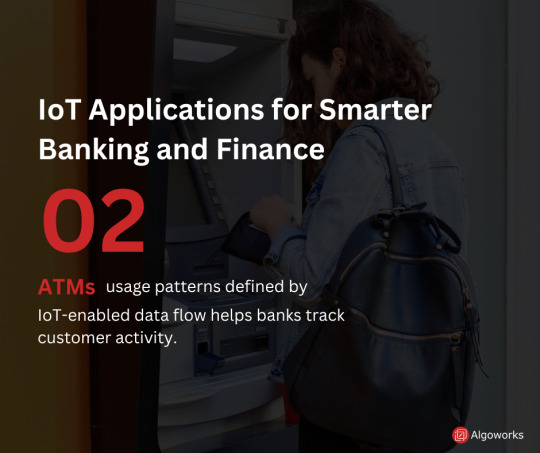


If you think that the internet has changed your life, think about it. The IOT is going to change it all over again.
#4 IOT Applications for smarter banking & Finance
#iot#internet of things#applications#banking#finance#smartbranch#atm#trade#tradefinance#insurance#algoworks#data#preventive measures
2 notes
·
View notes
Text
Boost Productivity, Transform Your Industry, and Stay Ahead of the Curve
With years of experience in custom software development, KPIS offers comprehensive solutions to fulfill your business requirements. Our software development team ensures that your journey with custom software is smooth, revolutionary, and aligned with your strategic objectives. Besides, businesses can use the newest technologies and agile processes to remain ahead of the competition, unleash new efficiencies, and meaningfully engage customers with our help.
#software development company#software development Services#software development#software development Cost#custom software development#Hire Software Developers#Hire Mobile App Developers#Custom Software Development Services#custom software solutions#Custom Software Development in 2024#app development#application development#game development company#technology#web development#internet of things#artificial intelligence#iot
0 notes
Text
What is the Internet of Things (IoT)? A Deep Dive into the Digital Symphony
Explore the Internet of Things (IoT) and uncover how this digital symphony connects devices, revolutionizing our world with smart technology.
#Internet of Things#IoT#Connected Devices#Digital Symphony#Smart Connectivity#IoT Explained#What is IoT#IoT Technology#IoT Connectivity#IoT Applications
0 notes
Text
Elements of IoT Development: Connecting the Digital World

Exploring the basics of IoT development by Panoramic Infotech unveils the fundamental elements of connecting devices, leveraging data, and creating innovative IoT solutions: For more information: https://www.panoramicinfotech.com/internet-of-things-iot/
#iot development#iot services#iot application#internet of things software development#iot application development
0 notes
Text
Future Of Iot In The Automotive Industry

The automotive industry is undergoing a significant transformation with the integration of IoT technologies. Connected cars and smart transportation systems are becoming the norm, enhancing safety, efficiency, and convenience. In this blog, we explore how various IoT technologies and platforms are shaping the future of the automotive sector.
Role of IoT Devices in Connected Cars
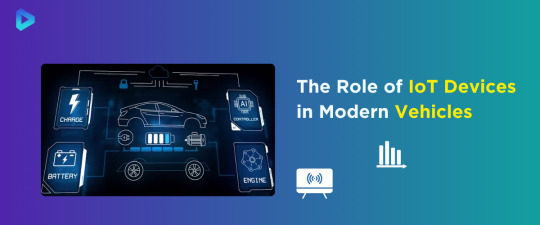
Importance of IoT Devices in Modern Automobiles
IoT devices are pivotal in modern automobiles, significantly enhancing their functionality and safety features. These devices facilitate seamless communication between vehicles and infrastructure, leading to improved traffic management and reduced accident rates. Sensors gather real-time data on how vehicles perform and how drivers behave. This information is crucial for predictive maintenance and enhancing the overall driving experience. IoT devices monitor crucial parameters like tire pressure, engine health, and fuel levels. These sensors issue prompt alerts for required maintenance.
Enhancing Vehicle Functionality with IoT Integration
Integrating IoT into vehicles drastically enhances their functionality, offering a range of advanced features. Smart cars can now include autonomous driving capabilities, real-time navigation, and personalized infotainment systems. IoT integration allows vehicles to interact with smart city infrastructure. This optimizes routes based on current traffic conditions to reduce travel time. IoT-powered navigation systems offer real-time traffic updates and recommend alternative routes to bypass congestion. IoT facilitates advanced driver-assistance systems (ADAS), including features such as adaptive cruise control, lane-keeping assistance, and automated parking.
Key Features of IoT-Enabled Automotive Systems
IoT-powered automotive systems incorporate various features that significantly boost safety and convenience for both drivers and manufacturers. These features include:
Real-Time Monitoring: Continuous monitoring of vehicle performance and health, providing timely alerts for maintenance and repairs.
Remote Diagnostics: Allowing technicians to diagnose and fix issues remotely, reducing downtime and improving efficiency.
Enhanced Connectivity: Enabling vehicles to communicate with each other and infrastructure, improving traffic management, and reducing accidents.
Advanced Security: Implementing robust security measures to protect vehicle data from unauthorized access and ensure data integrity.
Personalized Experience: Customizing infotainment systems based on driver preferences, providing a more enjoyable driving experience.
Impact of IoT Cloud on Smart Transportation
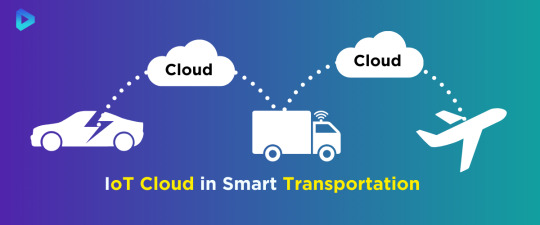
How IoT Cloud Enhances Vehicle Connectivity
The IoT Cloud significantly enhances vehicle connectivity by enabling seamless communication between vehicles and other connected devices. Vehicles can share real-time information with each other and with infrastructure systems through IoT Cloud platforms. This improves traffic flow and safety. Connected cars can communicate traffic conditions, road hazards, and optimal routes to each other. This information assists drivers in making informed choices and steering clear of traffic jams. IoT Cloud services allow for over-the-air updates. This ensures that vehicle software remains up-to-date with the latest features and security patches.
Real-Time Data Processing with IoT Cloud
Real-time data processing is a critical capability of IoT Cloud solutions. It enables vehicles to react promptly to changing conditions. The IoT Cloud processes vast amounts of data generated by sensors and devices in connected cars instantly. This immediate analysis of data allows for timely actions, such as adjusting vehicle speed to avoid collisions, optimizing fuel usage, and enhancing navigation accuracy. When a connected vehicle detects a sudden slowdown in traffic, the IoT Cloud processes this data. It then sends alerts to nearby vehicles, helping to prevent accidents. Real-time processing supports advanced driver-assistance systems (ADAS). It provides the necessary data for features like lane-keeping and adaptive cruise control.
Cost Benefits of Implementing IoT Cloud Solutions
Implementing IoT Cloud solutions offers significant cost benefits for the automotive industry. A major benefit is the decrease in infrastructure expenses. IoT Cloud services eliminate the need for extensive on-premises hardware and maintenance. Additionally, IoT Cloud solutions enable predictive maintenance, which helps identify potential vehicle issues before they become costly problems. By addressing maintenance needs proactively, companies can reduce downtime and extend the lifespan of their vehicles. IoT Cloud services allow businesses to pay only for the resources they use. This approach makes it a cost-effective solution for both small startups and large organizations.
Industrial IoT Advancements in the Automotive Sector
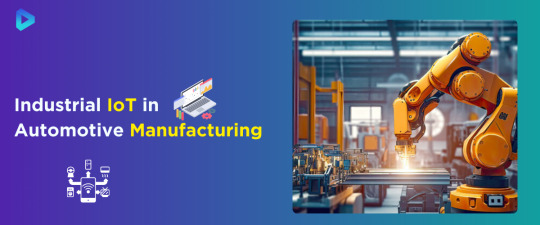
Industrial IoT Applications in Vehicle Manufacturing
Industrial IoT (IIoT) has changed vehicle manufacturing by integrating advanced sensors, data analytics, and automation technologies. These applications enable real-time monitoring and control of manufacturing processes, ensuring higher precision and quality. For example, IoT sensors can monitor equipment performance and detect anomalies, allowing for immediate adjustments to maintain optimal production conditions. Additionally, IIoT enables better inventory management through automated tracking of parts and materials, reducing waste and ensuring that production lines run smoothly. The integration of IIoT in vehicle manufacturing also facilitates seamless communication between machines and systems, improving coordination and efficiency across the production floor.
Improving Production Efficiency with Industrial IoT
Implementing Industrial IoT solutions significantly improves production efficiency in the automotive sector. By providing real-time data on production processes, IIoT helps identify bottlenecks and areas for improvement. For instance, IoT-enabled machinery can automatically adjust settings to optimize performance and minimize energy consumption. This leads to reduced downtime and increased throughput. IIoT monitors the usage of raw materials and energy, ensuring efficient resource management. The insights gained from IIoT data analytics enable manufacturers to streamline operations, reduce costs, and enhance overall productivity.
Predictive Maintenance in the Automotive Industry
Predictive maintenance is a key benefit of Industrial IoT in the automotive industry. IoT sensors monitor the condition of machinery and equipment, allowing manufacturers to predict maintenance needs, which helps prevent unexpected breakdowns and costly repairs. Vibration sensors on motors can detect early signs of wear and tear. They prompt timely maintenance before a failure occurs. This proactive approach extends the lifespan of equipment and reduces downtime, leading to significant cost savings. Additionally, predictive maintenance helps ensure consistent product quality by maintaining optimal operating conditions for machinery.
Advantages of Using Azure IoT Hub for Vehicles
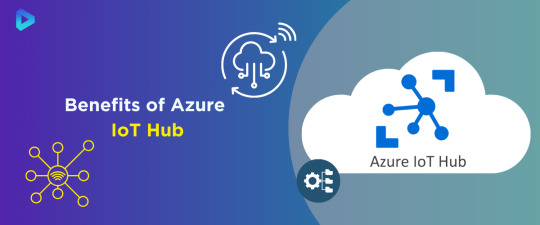
Integrating Azure IoT Hub with Automotive Systems
Integrating Azure IoT Hub with automotive systems offers numerous benefits, enabling seamless communication and data exchange between connected vehicles and cloud services. This integration facilitates real-time monitoring and control of vehicle functions, enhancing both performance and safety. Manufacturers can use Azure IoT Hub to gather and analyze data from sensors embedded in vehicles. The system provides insights into engine health, fuel efficiency, and driver behavior. The integration supports over-the-air (OTA) updates. Vehicle software remains current with the latest features and security patches.
Features of Azure IoT Hub for Smart Cars
Azure IoT Hub offers a range of features that are particularly beneficial for smart cars. These features include:
Device Management: Enables remote monitoring and control of vehicle systems, allowing manufacturers to diagnose issues and deploy updates without physical access.
Data Ingestion and Analysis: Collects and processes large volumes of data from connected vehicles, providing actionable insights for improving vehicle performance and safety.
Security: Implements robust security protocols to protect vehicle data from unauthorized access and cyber threats.
Compatibility: Supports integration with various IoT devices and platforms, ensuring seamless communication across different systems.
Scalability: Azure IoT Hub can handle a vast number of connected devices. The capability is suitable for large-scale deployments in the automotive industry.
Scalability Benefits of Azure IoT Hub
Azure IoT Hub's ability to grow is a significant advantage. It is crucial for automotive manufacturers and service providers. Azure IoT Hub can efficiently manage and process data from millions of connected vehicles. This ensures consistent performance regardless of the scale of deployment. This ability to grow allows automotive companies to expand their IoT solutions as their fleet grows. It ensures there is no compromise on performance or reliability. Additionally, Azure IoT Hub's scalable architecture supports diverse use cases, from small pilot projects to large-scale commercial deployments.
Using Thingspeak for Automotive Data Analysis

Thingspeak Applications in Vehicle Diagnostics
Thingspeak is a powerful tool for vehicle diagnostics, offering real-time data analysis and insights. By leveraging Thingspeak, automotive companies can monitor engine performance, fuel efficiency, and other critical parameters. This data helps in identifying potential issues before they become serious problems, enabling proactive maintenance. For instance, Thingspeak can track temperature variations in engine components, alerting technicians to possible overheating issues. This application of Thingspeak in vehicle diagnostics not only improves vehicle reliability but also enhances the safety and satisfaction of the driver.
Real-Time Monitoring with Thingspeak for Cars
Real-time monitoring is one of the standout features of Thingspeak for cars. Thingspeak collects and processes data from various sensors in real-time. This provides instant insights into vehicle performance and health. This capability allows for immediate response to any problems or malfunctions, reducing the risk of breakdowns. If a vehicle's tire pressure drops below a safe level, Thingspeak can instantly alert the driver. It can also suggest nearby service stations.
Data Visualization Capabilities of Thingspeak
The data visualization capabilities of Thingspeak are essential for making sense of complex automotive data. With its powerful visualization tools, Thingspeak can transform raw data into easily understandable graphs and charts. This helps automotive engineers and technicians quickly identify trends and patterns, helping better decision-making. For instance, Thingspeak can display a heat map of engine performance, highlighting areas that require attention. Teams can share these displays across departments, improving collaboration and efficiency in addressing vehicle issues.
Verizon Thingspace and Its Automotive Applications
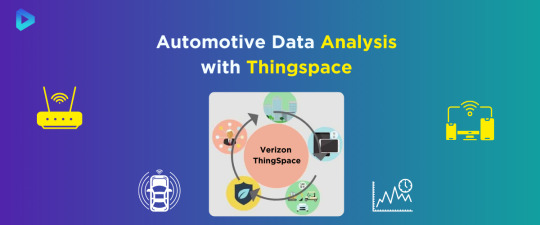
Connecting Vehicles with Verizon Thingspace
Verizon Thingspace provides robust solutions for connecting vehicles, helping seamless communication between cars, infrastructure, and cloud services. By leveraging Verizon's reliable network, automotive companies can ensure that their vehicles remain connected, regardless of location. Connectivity allows for real-time data exchange. It enables features such as remote diagnostics, over-the-air updates, and enhanced navigation services. A connected car can receive software updates and new features without needing a visit to the dealership. The vehicle always has the latest capabilities.
Features of Verizon Thingspace for Automotive Industry
Verizon Thingspace offers a variety of features tailored specifically for the automotive industry. Key features include:
Device Management: Simplifies the process of managing multiple connected devices, ensuring they are functioning correctly and securely.
Data Analytics: Provides powerful tools for analyzing vehicle data, helping manufacturers improve performance and efficiency.
Security: Advanced encryption and verification protocols protect data transmitted between vehicles and the cloud.
Scalability: Supports the growth of connected vehicle fleets, making it easy to add new devices and scale operations.
Enhancing Vehicle Connectivity with Verizon Thingspace
Verizon Thingspace significantly enhances vehicle connectivity by providing a robust and scalable platform for IoT applications. The platform enables vehicles to communicate seamlessly with each other and with external systems. It helps with traffic management, emergency response, and fleet management. Enhanced connectivity also allows for better integration with smart city infrastructure, improving overall transportation efficiency. Connected cars can share real-time traffic data with city planners. This sharing helps to reduce congestion and improve road safety.
Let's Discuss Your Idea
#IoT#IoT Devices#IoT Cloud#Industrial IoT#Azure IoT Hub#Thingspeak#Verizon Thingspace#Iot Internet#Internet Of All Things#ai#blockchain#iotsolutions#iot applications#iot development services#iot tech
1 note
·
View note
Text
Revolutionize your remote home inspections by using internet of things (IoT), augmented reality (AR), and virtual reality (VR) to provide a superior home inspection experience.
#IoT#AR#VR#internet of things#augmented reality#virtual reality#Remote Home Inspections#Home Inspections#Home Inspection Software#Home Inspection Software Development#Mobile Application Development#Software Development
0 notes
Text
How to Create Stunning Graphics with Adobe Photoshop
Introduction
Adobe Photoshop is the preferred software for graphic designers, photographers, and digital artists worldwide. Its powerful tools and versatile features lead to the foundation of an essential application that one needs to create the best kind of graphics. Mastering Photoshop can improve your creative-level projects, whether you are a beginner or an experienced user. In this tutorial, we will walk you through the basics and advanced techniques so you can create stunning graphics with the help of Adobe Photoshop. Read to continue
#Technology#Science#business tech#Adobe cloud#Trends#Nvidia Drive#Analysis#Tech news#Science updates#Digital advancements#Tech trends#Science breakthroughs#Data analysis#Artificial intelligence#Machine learning#Ms office 365#Quantum computing#virtual lab#fashion institute of technology#solid state battery#elon musk internet#Cybersecurity#Internet of Things (IoT)#Big data#technology applications
0 notes
Text
#cloud application development#custom software development company#app development company#mobile app developer#best app development software#healthcare app developers#software development company#iot developers#largest app developers#internet of things app development#app building agency
0 notes
Text
IoT Development; A Complete Guide, on Bringing Devices from Idea to Implementation
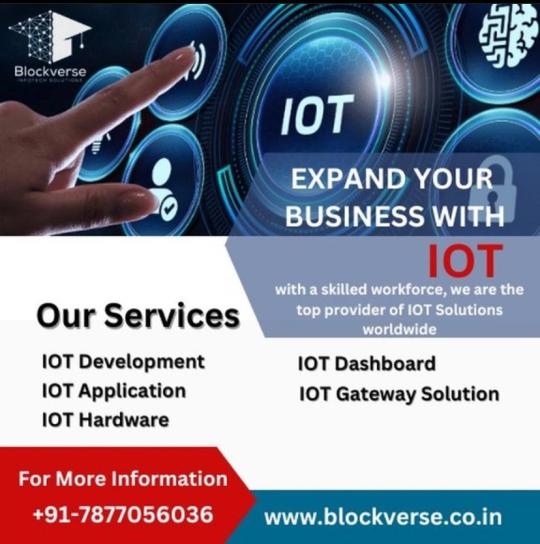
In todays paced tech world, the Internet of Things (IoT) has emerged as a game changer transforming the way we engage with our environment. At Blockverse Infotech Solutions we recognize the power of devices providing customized solutions to bring ideas to life and seamlessly integrate them into the digital realm.
The Internet of Things (IoT) has evolved from a buzzword to an aspect of contemporary technology influencing various facets of our everyday routines. From homes and wearable gadgets to automation and healthcare systems IoT enables us to connect and empower ourselves like never before. However transitioning from conceptualization to implementation of solutions can be overwhelming without guidance.
Conceptualization marks the phase, in IoT development. It entails identifying the problem or opportunity that can be addressed through technology and envisioning how interconnected devices can improve efficiency, convenience or safety. At Blockverse Infotech Solutions we work closely with clients to brainstorm ideas grasp their needs and devise IoT solutions tailored specifically for them.
Once the concept is solidified, the development phase begins. This involves designing and prototyping IoT devices, selecting appropriate sensors and connectivity protocols, and developing the software infrastructure to collect, analyze, and act upon data generated by the devices. Our team of skilled developers and engineers at Blockverse Infotech Solutions leverages cutting-edge technologies to build robust and scalable IoT solutions that meet the highest standards of performance and reliability.
Testing and validation are integral parts of the development process, ensuring that IoT devices function as intended and deliver the desired outcomes. Through rigorous testing procedures and simulation environments, we identify and rectify any issues or vulnerabilities, ensuring that the deployed IoT solutions operate seamlessly in real-world scenarios.
Deployment marks the culmination of the IoT development journey, as the solutions are implemented and integrated into existing systems or environments. From device provisioning and network configuration to data management and security protocols, our experts at Blockverse Infotech Solutions handle every aspect of the deployment process with precision and care, ensuring a smooth transition from development to operation.
Post-deployment support and maintenance are essential for ensuring the long-term success and sustainability of IoT solutions. At Blockverse Infotech Solutions, we offer comprehensive support services, including monitoring, troubleshooting, and software updates, to keep IoT devices running smoothly and efficiently.
In conclusion, navigating the complex landscape of IoT development requires expertise, innovation, and a comprehensive understanding of the technology. With Blockverse Infotech Solutions providing tailored solutions for IoT devices, businesses and organizations can embark on their IoT journey with confidence, knowing that they have a trusted partner to guide them from concept to deployment and beyond.
#internet of things#iot#iot devices#iot projects#iot applications#iot development company#iot device management software#embedded system design#iot device management app#embedded operating system#iot monitoring software#embedded systems#what is embedded system
0 notes
Text

Explore the possibilities of IoT with Ennoble Technologies expert Internet of Things (IoT) services. Transform your business with innovative solutions.
Do Visit: https://ennobletechnologies.com/internet-of-things/
#Internet of Things#IoT Technology#IoT Solutions#Connected Devices#IoT Integration#Smart Technology#IoT Applications#IoT Devices#IoT Trends#IoT Innovations#IoT Connectivity#Smart Home Systems#Industrial IoT#IoT Development#IoT in Business
1 note
·
View note
Text
3 Game-Changing IoT Applications In Sports
The integration of Internet of Things (IoT) technology has ushered in a new era for sports, revolutionizing the way athletes train, compete, and fans engage with their favorite games. In this article, we will explore three game-changing IoT applications in sports that have not only enhanced performance but also transformed the overall landscape. From data analysis in coaching to bolstering cybersecurity measures, IoT in sports has become a pivotal player in the evolution of the sporting industry.
Visit us:
#integration of Internet of Things#app development#website design services#best iphone app development#ui and ux design service#ios app development#blockchain application development#iot development services
0 notes
Text
Having more than years of experience in the dynamic game and app development industry has allowed us to become a leading technology company dedicated to pushing the boundaries of quality and innovation. KPIS– a leading mobile game app development company, stands at the forefront of innovation, including online mobile games, AR, and VR game development, ensuring your game is unique and prepared for the future.
#web development#app development#game development company#technology#game development#rummy game development#AR Game Development#VR Game Development#Mobile Game Development Company#Online Mobile Game Development Services#Online Game Development#Mobile Game Development Tools#Mobile Game Technology Trends#artificial intelligence#internet of things#application development#iot#Trending Mobile Games in 2024
0 notes